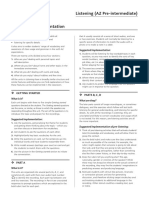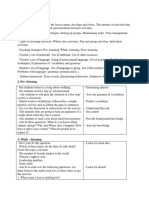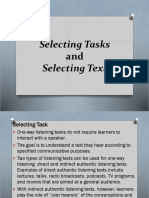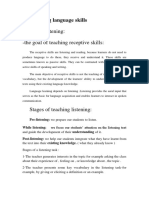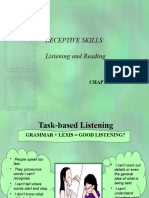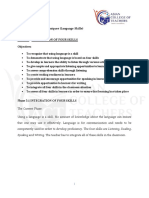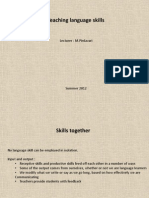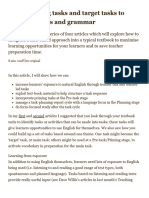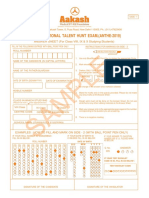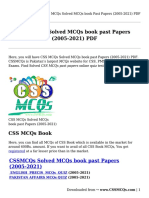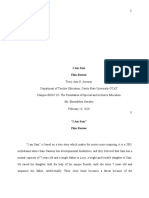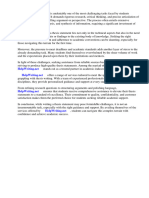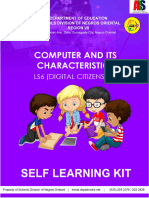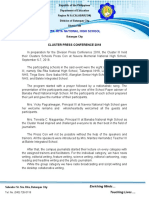0% found this document useful (0 votes)
247 views18 pagesCBA Listening&Reading
The document provides a course book analysis of listening activities from Units 1-4 of the textbook "way2go! 7 Coursebook". It analyzes the listening tasks based on four research questions: 1) The receptive goals of the activities in terms of listening for gist, specific information, or implications. 2) The different listening strategies students can use to achieve the goals. 3) The objectives of pre-listening, while-listening, and post-listening activities. 4) How the activities relate to the Common European Framework of Reference for Languages descriptive scales. The analysis finds that the activities target a variety of receptive goals and strategies, and the pre, during, and post activities aim to introduce topics, enhance vocabulary, and
Uploaded by
s1094779Copyright
© © All Rights Reserved
We take content rights seriously. If you suspect this is your content, claim it here.
Available Formats
Download as DOCX, PDF, TXT or read online on Scribd
0% found this document useful (0 votes)
247 views18 pagesCBA Listening&Reading
The document provides a course book analysis of listening activities from Units 1-4 of the textbook "way2go! 7 Coursebook". It analyzes the listening tasks based on four research questions: 1) The receptive goals of the activities in terms of listening for gist, specific information, or implications. 2) The different listening strategies students can use to achieve the goals. 3) The objectives of pre-listening, while-listening, and post-listening activities. 4) How the activities relate to the Common European Framework of Reference for Languages descriptive scales. The analysis finds that the activities target a variety of receptive goals and strategies, and the pre, during, and post activities aim to introduce topics, enhance vocabulary, and
Uploaded by
s1094779Copyright
© © All Rights Reserved
We take content rights seriously. If you suspect this is your content, claim it here.
Available Formats
Download as DOCX, PDF, TXT or read online on Scribd
/ 18





